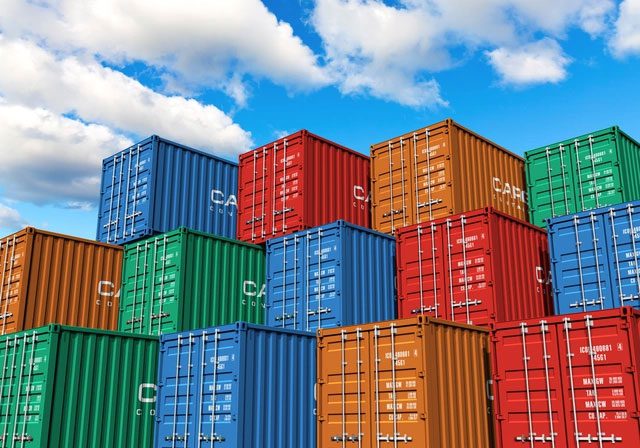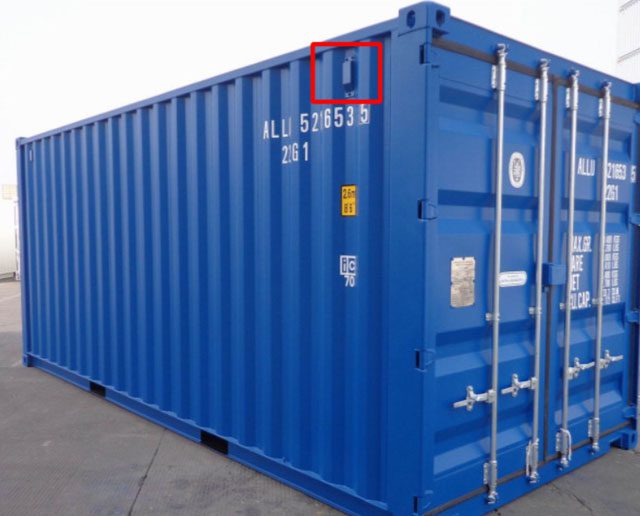Many hazardous chemicals can cause immediate death or have chronic effects, and scientists have discovered these substances inside shipping containers.
They were completely unaware that the shipping container was filled with toxic gas.
But just moments after opening it, two workers began to feel the effects. One man lost consciousness and began to convulse due to seizures. The other felt a burning sensation in his throat and started to drool uncontrollably.
The accompanying shipping documents indicated that the container held glass and ceramics. The workers had no reason to suspect they were in danger. But the worst had happened. Fortunately, the ambulance team arrived in time to assist. Upon reaching the scene, the first responders saw the man convulsing and quickly anesthetized and intubated both workers. On the ambulance en route to the hospital, the medical staff began to feel discomfort as well: sore throats, itchy eyes, and increased salivation.

The workers had no idea what awaited them inside the shipping containers.
This terrifying incident, known by few, occurred in 2006 at a port in Rotterdam, the Netherlands. Fortunately, all those involved survived. The toxic gas that attacked them was methyl bromide, an odorless and colorless gas. Acute exposure to methyl bromide can be fatal, and both chronic and acute exposure are associated with an increased risk of prostate cancer.
In the years following the incident, researchers have continuously studied the hazardous chemicals that sometimes lurk inside sealed shipping containers.
Ruth Hinz, a PhD candidate at Massey University in New Zealand, led a recent study cataloging hazardous air chemicals inside shipping container samples sent to New Zealand. Hinz’s work is similar to a recent study conducted in Sweden, which found that for every eight containers arriving in the country, about one contained dangerous levels of chemicals in the air. When dockworkers open a container, they have very few ways to know what awaits them.
“It could be a cocktail containing a mixture of many chemicals inside the container,” Hinz said. “You won’t know in advance what will be in there.”
Some toxic chemicals are pumped into shipping containers for the purpose of disinfection. Methyl bromide is one example, although its use is now heavily regulated or banned in many countries. However, an additional challenge for port workers is the presence of other hazardous gases that may be completely unpredictable. As in Rotterdam, the lack of warning labels can also obscure the danger.

Containers remain the most popular means of transporting goods today.
Before sending a container on its way, port workers sometimes spray disinfectants on the cargo, especially if it is food, animal feed, or wood. These chemicals, such as methyl bromide, ethylene oxide, and phosphine, can cause a wide range of symptoms for those exposed, including nausea, skin irritation, seizures, and even death.
Some goods can even emit toxic chemicals. For example, product packaging may contain toluene, while plastics can release benzene. Prolonged exposure to these chemicals can damage bone marrow and lead to anemia.
There may also be residues from previous cargo left inside the shipping container. Workers may not realize that such toxins are waiting for them in a newly delivered container.
For her research, Hinz and her colleagues used data collected by New Zealand customs. The staff employed probing devices, which they could push through the rubber seals of the container doors, to collect air samples from 490 sealed containers. Hinz also collected air samples from dozens of other containers, tracking how the concentrations of various compounds changed in real-time as they were opened and mixed with fresh air from outside.
The investigation revealed numerous urgent issues. Customs officials found methyl bromide, the compound that caused dizziness and unconsciousness among the workers at the Rotterdam port, in 3.5% of the sealed containers. They found formaldehyde in 81% of the containers, and ethylene oxide in 4.7%, along with many other chemicals. Exposure to ethylene oxide can cause a variety of uncomfortable symptoms, including nausea, vomiting, and diarrhea. Formaldehyde, a preservative, is a known carcinogen and can also irritate the respiratory system when inhaled, among other symptoms.
In her study, Hinz and her colleagues found that some measured concentrations appeared to be high enough to cause acute reactions and immediate symptoms. However, Hinz noted that, in reality, it is quite rare for a worker to be directly exposed to such high levels of toxic gas; this is usually an exception. Instead, there is a more common but still significant risk of repeated exposure to lower concentrations. For instance, prolonged exposure to these chemicals can increase the risk of cancer or lead to mental health issues. However, there is currently very little research on the risks of chemicals inside shipping containers.
“I definitely believe this needs to be addressed, and even needs much more attention than it currently receives,” Hinz said.

Ventilation holes on containers, however, are not enough to reduce toxic gases inside.
Gunnar Johanson, a toxicologist at the Karolinska Institute in Sweden, who served as a reviewer for Hinz’s study, agrees with her assessment.
“We don’t know exactly how great the risk is, but it is an unnecessary risk because it can be easily addressed. All that is needed is a better ventilation system,” he said.
A few years ago, Johanson and his colleagues were called to inspect a suspicious shipping container in Sweden. It was filled with rice but also contained a strange blue bag filled with white powder. When Johanson analyzed the air sample, he found phosphine, a type of fumigant, at a concentration high enough to be lethal.
To protect dock workers, Johanson and his colleagues designed a device that connects to a suction fan and attaches to the ventilation holes, which are currently present on the sides of most shipping containers. Experiments showed that once the device is activated, the concentration of toxic gases will decrease within minutes.
“We can reduce about 90% of the volatile contaminants in an hour,” he added, and this device is now being used by the Swedish customs agency.
Martin Cobbald, CEO of Dealey Environmental, an environmental services company in the UK, also believes that there needs to be greater awareness in the transportation and logistics industry about the dangers associated with exposure to toxic gases in shipping containers.
- His company regularly contracts to open and ventilate containers, but he states, “We don’t do it often enough and for as many people as we should.”
- The technology behind the world’s largest container port
- How to stay safe near container trucks?
- 4 billion-year-old piece of Earth’s crust discovered beneath Australia





















































